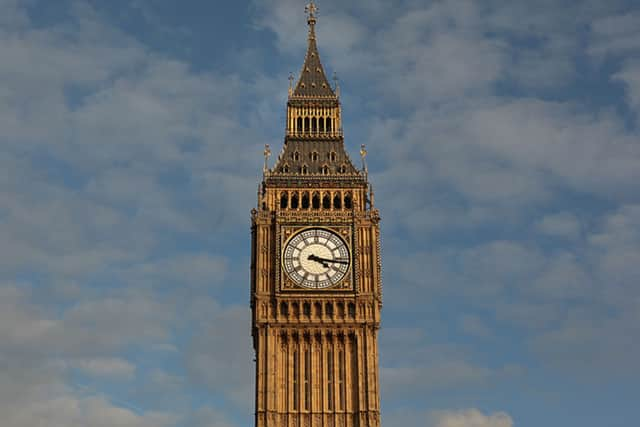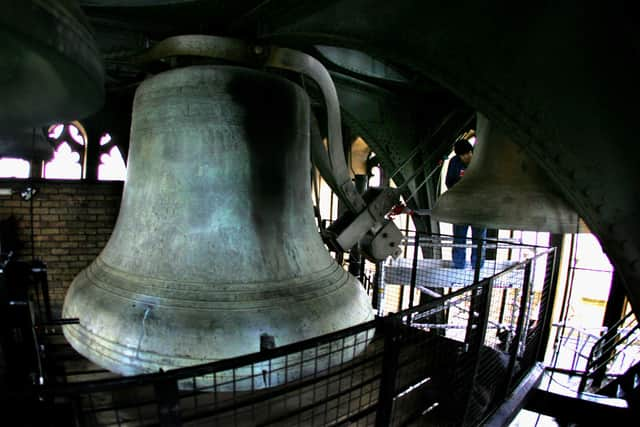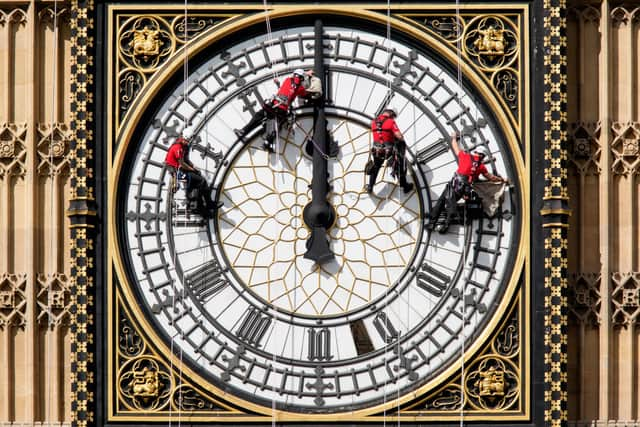Why is Big Ben called Big Ben? Is work on Elizabeth Tower finished 2022 - is it the biggest clock in the world
and live on Freeview channel 276
Big Ben, located in Westminster, London, is one of the most iconic - and misidentified - landmarks in the world.
Many believe that the name refers to the clock tower itself, but the huge building situated on the north side of the Houses of Parliament is actually called the Elizabeth Tower - a name it received in 2012 in honour of the late queen’s Diamond Jubilee. Before this date, it was, aptly, known as the Clock Tower.
Advertisement
Hide AdAdvertisement
Hide AdSo ‘Big Ben’ refers to something else. It is instead the name for the enormous, 13-ton bell that is housed inside the tower - which chimes across the city every hour. It has been helping London keep time for nearly two centuries.
The beloved monument recently underwent a refurbishment, where the clock was dismantled and serviced for the first time since it first started ticking in 1859. Its makeover has lasted five years - and cost £80 million - during which time the bell has remained mostly silent, apart from the odd chime on certain occasions, such as each year’s Remembrance Day.
But when will Big Ben officially start chiming again, is its restoration work complete, and how did it get its famous nickname? Here’s everything you need to know about the world’s most famous bell - and the clock tower that houses it.


Why is Big Ben called Big Ben?
The origin of the bell’s nickname remains a topic of debate even today - but there are two main beliefs.
Advertisement
Hide AdAdvertisement
Hide AdSome believe the bell was named after boxer Ben Caunt, the nineteenth century English Heavyweight Champion. But the arguably more likely theory is that it was named after Sir Benjamin Hall, a civil engineer who oversaw the rebuilding of the Houses of Parliament after the Great Fire in 1834. His name is inscribed on the bell which hangs in the clock tower.
Meanwhile, the tower itself was originally called the Clock Tower - but it is now officially known as the Elizabeth Tower, after it was renamed for Elizabeth II’s Diamond Jubilee.


Is the work on Elizabeth Tower finished?
According to the UK Parliament, the refurbishment of Elizabeth Tower is basically complete.
Its website says: “Work to the exterior is now complete and the majority of works inside the Tower are close to conclusion. Soon after the bells have returned to regular service, the Ayrton Light will be reconnected, power supplies activated and fire safety works completed. The principal contractor will remain on site until December 2022 to ensure works have been completed to a satisfactory standard.”
Advertisement
Hide AdAdvertisement
Hide AdThose in the vicinity of Big Ben over the last couple of weeks will have been able to hear some of its test chimes, and if you visited on any of the Remembrance Days over the past five years, you will also have been able to hear it then.
However, after its lengthy period of mainly silence, Big Ben starts ringing again, officially, on Sunday, November 13, 2022, where at 11am the bongs will sound 11 times to mark the beginning of Remembrance Sunday’s two minute silence.
From then on, the bells will start to chime again as normal – as, according to UK Parliament, it’s planned that this will “mark the official moment of permanent reconnection”.
Despite it starting to chime as normal though, visitors will not be allowed inside Elizabeth Tower until Spring 2023. This is reportedly because there still needs to be “installation and testing of new exhibition spaces, workshops and tour routes” before it can be reopened to the public.
What happened in the refurbishment?
Advertisement
Hide AdAdvertisement
Hide AdElizabeth Tower has had quite the makeover. The clock’s mechanism was given an upgrade, with clock mechanic Ian Westworth telling Sky News how they took “every single nut and bolt apart, and looked at every part, serviced it, painted it, and repaired it.”
The clock’s iconic dials have been restored to their original colour, ‘Prussian blue’, after experts discovered the shade under layers of black paint. Meanwhile, the lights behind the clock faces, which were once powered by gas, have now been switched to energy efficient LEDs.
Seven hundred pieces of stone have also been replaced - all of them carved on site. Cracks in the masonry have been mended, leaks have been stopped, and the effects of erosion and rusting have been repaired. Inside the building, there has been some redecorating - and a lift and toilet has been installed.


When was Big Ben - or the clock tower - built?
The clock tower’s construction was completed in 1856, designed by architects Augustus Welby Pugin and Charles Barry. It took 13 years to build.
Advertisement
Hide AdAdvertisement
Hide AdIt began telling time on 31 May, 1859, and the famous bell, Big Ben, first chimed on 11 July, 1859.
Is it the biggest clock in the world?
Elizabeth Tower stands at 315 feet high. Each of its clock faces has a diameter of 7 metres, while the length of its arrows are 2.7 metres and 4.2 metres. This makes it the largest clock in the world.
Comment Guidelines
National World encourages reader discussion on our stories. User feedback, insights and back-and-forth exchanges add a rich layer of context to reporting. Please review our Community Guidelines before commenting.
